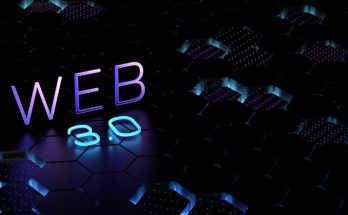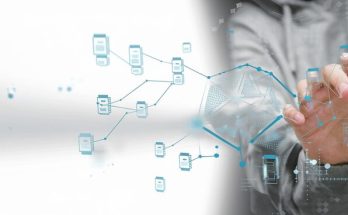Agreements and transactions using smart contracts are changing the way in which we are managing our agreements and transactions, nonetheless they have one key weakness, it cannot read information outside of the chain in which it is operating. This causes a major dilemma when you require real world data to initiate contract performance. Enter blockchain oracles: which act as the missing links between on-chain solutions and off-chain data.
Over 36 blockchains benefit or use oracle services and the market grows too fast by 2025. The data connectors have come to form the backbone of decentralized finance (DeFi) applications and facilitate things like automated insurance payouts set based on weather data, to prediction markets that are settled by real-world events.
What is Blockchain Oracle?
It is necessary to consider blockchain oracles as interpreters between two worlds. On the one hand, you get the closed off, hermetic environment of a blockchain where information cannot be altered and cannot be compromised. Across the divide is the messy, in-flux real world that is comprised of stock prices, weather reports, sports scores, and so much more data.
Blockchain oracles do not originate data on their own. They respond instead by serving as trusted messengers that retrieve, validate and post external information as smart contracts in a form recognised by the blockchain. The absence of these essential services would leave smart contracts to operate within their digital margins which would significantly reduce their utility.
It is a dual mechanism process. The on-chain layer hears out the requests of the smart contracts, whereas the off-chain nodes access the related data sources, confirm it is indeed accurate, and translate the information into transactions able to be read by the blockchain.
Why Blockchains Require off-Chain Data Sources
By construction, blockchains such as Ethereum and Bitcoin are closed systems. This is secure and prevents tampering but it makes developers tasks difficult when they want to develop applications that react to real-life happenings.
As an example, consider a decentralized insurance application that automatically compensates claims in case a flight is delayed. The smart contract requires to have access to the real-time flight information of airlines and airports. In the absence of oracles, the blockchain has no visibility into whether Flight AA123 landed on time, or indeed whether there was a three-hour delay.
Correspondingly, DeFi protocols should be fed with precise price data in order to operate correctly. To sell a loan, a lending platform must understand the market value of secured assets so that it may liquidate or foreclose on them. To sell or buy stock at the best time, applications that do stock trading require real-time stock market data.
Oracle Services in 2025 Types
Oracle space has changed a lot and there are various types of oracles which can be used to serve a different purpose:
Inbound Oracles
These services introduce the blockchain to external data. They could send information on the price of cryptocurrency, weather or sports faculties to smart contracts, which require such information in order to make decisive decisions.
Outbound Oracles
Operating inelled, outbound oracles relay blockchain data to external systems. As an example, they may cause bank alerts to be sent when an on-chain payment is done or inventory systems to be updated when a transaction has been fulfilled in a supply chain.
Cross-Chain Oracles
Cross-chain oracles enable the communication between networks as the blockchain ecosystem evolves into a more interconnected environment. They make inter-blockchain transfer of data and assets possible that’s why they support the multi-chain future, of decentralized applications.
Compute-Enabled Oracles
These more sophisticated services do the more complicated calculations off-chain and report outcomes to the blockchain. This strategy is cost effective as the on-chain computation may be expensive and slow. One such type is the Verifiable Random Function (VRF) by Chainlink, where it produces genuinely random numbers to run lottery games and other use cases that necessitate unpredictability of results.
Top Providers of oracle reshaping the business
Some key players are very much present in the 2025 oracle market and each of them would have certain strengths associated with them:
- Chainlink is the industry leader, having created the first decentralized oracle networks to provide price feeds, weather data and others on many blockchains. They have infrastructures that back thousands of DeFi applications and handles billions of dollars of transactions.
- SupraOracles has experienced massive adoption due to its secure and decentralized oracle allowing many blockchains to interact in a fast finality context. Fast information delivery and decentralization with a focus on security are the features of their network.
- Pyth Network focuses on high-frequency financial markets, where it delivers real-time price information that is low latency and ideal in a trading context or a DeFi protocol.
- The other two most popular providers, Band Protocol and API3, specialise in other spheres of data delivery and oracle infrastructure.
The Oracle Problem: Security Problems and Solutions
The oracle problem is one of the most important issues in blockchain development. Oracles present a security concern because they are positioned at the bridge between the most trusted blockchain networks and possibly untrustworthy exterior sources.
Single-point oracles present centralization risks which are opposing decentralization, the nature of blockchain. Giving a false piece of data by one of the oracles might cause inaccurate operations of smart contracts and might result in a loss of money by users.
Current solutions deal with these issues in a few ways:
- Decentralized Oracle Networks then are based on numerous data sources and nodes to check information prior to delivery. Such redundancy minimises its susceptibility of being tampered with and enhances its reliability.
- External sources Cryptographic Verification techniques provide data integrity when verifying a data source to blockchain networks.
- Reputation Systems include the measurement of oracle performance over time so that users can distinguish the sources of unreliable data.
Real World Driven Adoption
The applications of the Oracle technology are workable in many industries:
- The most significant DeFi application is Decentralized Finance (DeFi), where protocols need real-time price feeds on loans, exchanges, and derivatives. The overall totals locked in DeFi contracts depend on nondubious oracle services: over 100 billion in total.
- Insurance Applications automatically offer claims which are backed by verifiable real-life incidents. Just like crop insurance that compensates farmers when harvests get ruined by the weather, and flight delay insurance that reimburses passengers that never have to make manual claims.
- Supply Chain Management monitors products through their processes, oracles report data on shipping conditions, confirmation of delivery, as well as the quality indicators.
- Prediction Markets is a system to bet on a future event and oracles give authoritative information about an outcome. Such sites have become famous when it comes to making predictions about elections as well as doing sports betting.
Trends and Trajectory in the Industry
Oracle industry is still developing quickly towards 2025, and there are some important tendencies dictating its future:
- The use of Decentralized Oracle Networks in more protocols is becoming de facto to increase resiliency and trust by having multiple sources of information.
- Cross-Chain Functionality is also growing with an increasingly interconnected blockchain ecosystem. Oracles today make it possible to transfer data easily across networks, and they make genuinely interoperable applications a reality.
- Enterprise Adoption has gained momentum where customary business firms are converting or using oracle-based solutions to automate contracts and manual operations. This mainstream acknowledgement has corroborated the practical worth of the technology outside of crypto-specific use cases.
- Advanced Computation Services are expanding, with off-chain oracles carrying out ever more sophisticated calculations, minimizing costs and optimizing performance.
Oracle Integration Start Here
Before selecting the providers, there are various factors that surround the selection of oracle services by the developers who intend on integrating these services. The reliable and uptime is very important because applications rely on stable data delivery. Manipulation is guarded against by the security measures such as decentralization and cryptographic verification measures. Considerations of the cost would be the cost of the oracle as well as transaction cost of updating the data.
The model also should consider the type of data that must be selected, geographic coverage and complexity of integration. Most vendors have testnet environments, on which developers can play before going to the mainnet.
The Oracle services have evolved into a niche blockchain input which is now an infrastructure serving as the next generation of decentralized applications. They can be combined with real-world data, opening up useful business applications well beyond this basic token transfer.
With the further advance and development of blockchain technology, oracles will become even more significant or even crucial in this fill-in-the-gap between digital assets and traditional systems. The prospect of increasing innovation in the following years with more efficient usage of decentralized secure and efficient oracle networks is strong.
The supply chain solution, DeFi protocols, or even prediction markets, regardless of what you are building, understanding the oracle technology, and selecting the best providers will be key to the success of your project. These essential data bridges are what determine the future of blockchain applications which makes smart contracts smart.



